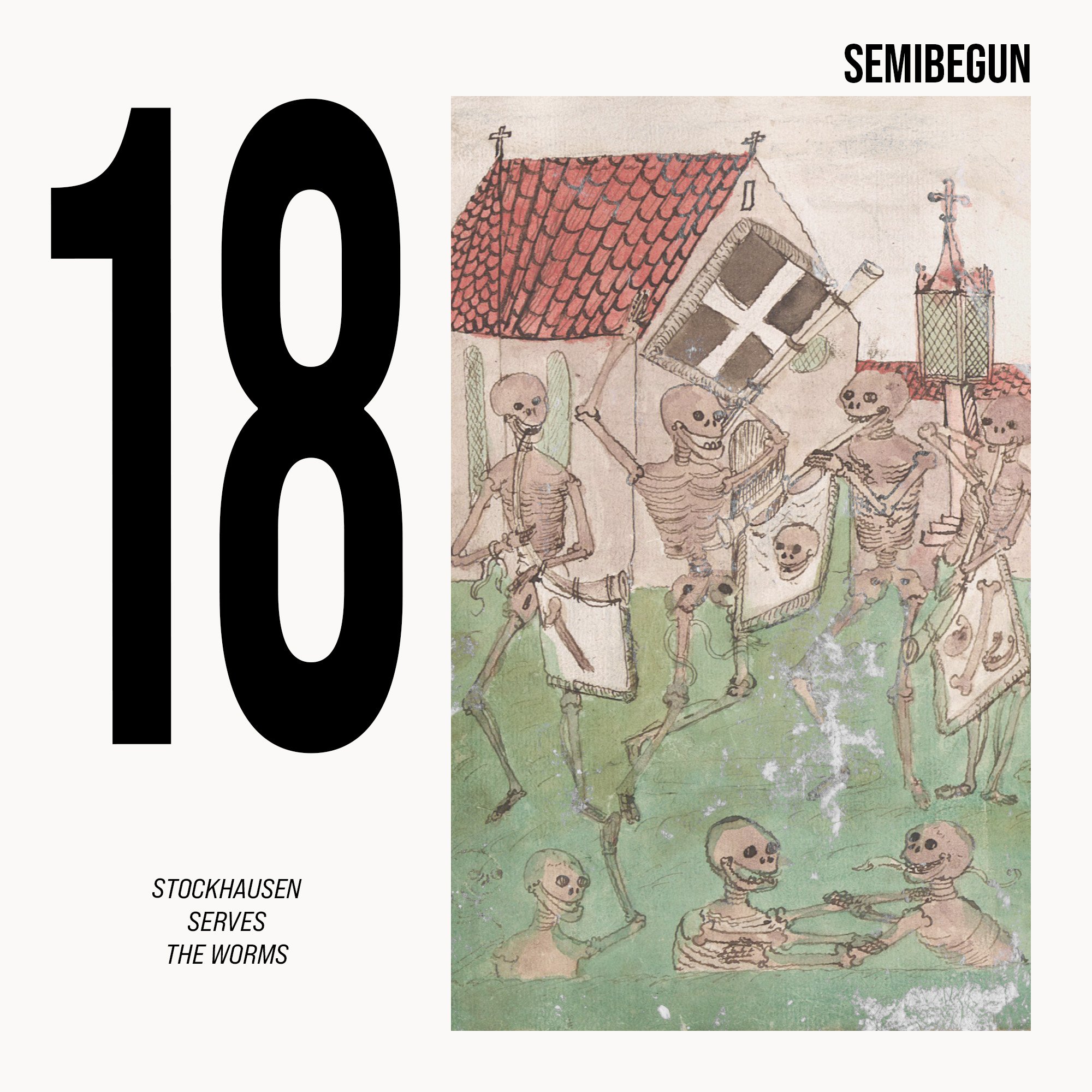SEMIBEGUN 018: STOCKHAUSEN SERVES THE WORMS
REMIXES OF THE EARLY ELECTRONIC AVANT GARDE
Air Date: April 26, 2023
Prior to the prevalence of electronic sound in the mainstream, electronic music-making was primarily a practice of researchers, specialists, and avant-garde composers within state-sponsored facilities like the BBC Radiophonic Workshop and Westdeutscher Rundfunk (WDR) in Cologne and within private universities in the States like the Rockefeller Foundation-funded Columbia-Princeton Electronic Music Center. This special episode of Semibegun, a preview of the upcoming tape release "Stockhausen Serves the Worms," presents an hour of remixes, recompositions, and deconstructions of music made in these facilities. Pieces by Delia Derbyshire, Daphne Oram, Iannis Xenakis, Edgard Varèse, and György Ligeti reimagined by fantastic contemporary musicians including Bridget Ferrill, Matias Vilaplana, Amber Bouchard, and Onokio.
TRACKS
Onokio – tristle)+eco
Daphne Oram – Pulse Persephone (1965)
Kittie Cooper – gasses (and goldfish) expand to fill their containers
orchid dealer – pulse persephone (orchid dealer edit)
György Ligeti – Artikulation (1958)
Amber Bouchard – On “Artikulation”
Edgard Varèse – Poème électronique (1958)
Matias Vilaplana – Verdad Greasè (intensities)
emme – concrete
Delia Derbyshire – Pot au Feu (1968)
Madlib – Real (Instrumental)
Milton Babbitt – Philomel (1964)
Heather Mease – All the Voices of Feeling Died in the West
Luciano Berio – Visage (1961)
Bridget Ferrill – Gesang der Concret Jünglinge (Ph)
Becky Brown – Creative Commoncrete Ph (Attribution III.0)
Iannis Xenakis – Concret Ph (1958)
Karlheinz Stockhausen – Gesang der Jünglinge (1956)
Carlos Johns-Dávila – Candreés
Onokio – TL
Pierre Henry – Le voile d'Orphée (1953)
Pierre Schaeffer – Cinq études de bruits: Étude aux chemins de fer (1948)
Ten composers and electronic musicians of various musical backgrounds were given the task to “remix/deconstruct/recompose/resample” a piece of electronic music composed before 1965, prior to greater popularization of the synthesizer in the late 1960s and before an era of electronic music primarily as a practice of researchers, specialists, and avant-garde composers. The artists were given a set of example pieces to choose from, including Stockhausen’s “Gesang der Jünglinge”, Varese’s “Poeme Electronique,” Oram’s “Pulse Persephone”, and works from the album Columbia-Princeton Electronic Music Center, while also encouraged to use other pieces of personal interest to them. Most of the artists approached the sonic and formal content of this music by building a new context for those samples and ideas. This method compares to traditional composition exercises of incorporating mechanics, theory, and appropriated motifs into a personal style, in these cases into contemporary popular and experimental music such as ambient, noise, dance, etc.. The act of de-composition–taking a piece apart sample by sample to construct an entirely new piece–provides an avenue to subvert, and even feel present within, a repertoire that does not reflect a diversity of identities and stylistic approaches while also allowing for appreciation and experimentation. The directions taken reflect a multiple approaches on this spectrum.


